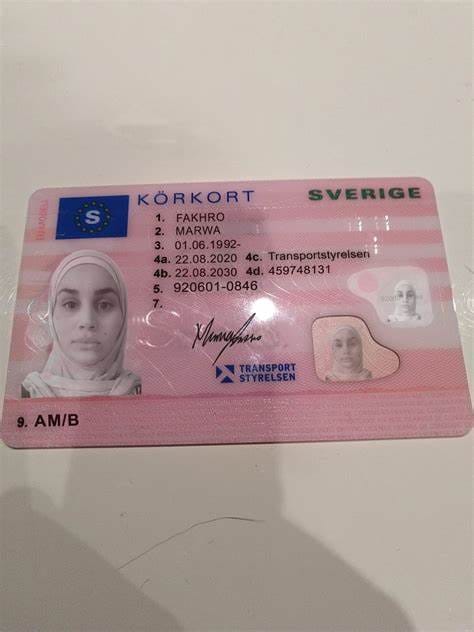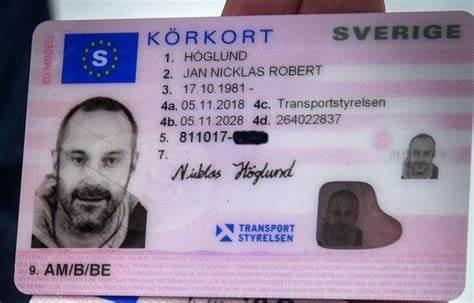10 Simple Steps To Start The Business You Want To Start Fast Driver's …
페이지 정보

본문

Navigating the World Without a Driver's License: Exploring Alternatives and Implications
In today's world, where movement is a foundation of daily life, the concept of living without a driver's license may seem daunting. However, for some individuals, the decision to forgo a driver's license is a mindful choice driven by numerous factors, consisting of ecological issues, cost, and personal preference. This article delves into the options to driving and the implications of living without a driver's license, providing a thorough guide for köp sverige körkort those considering this way of life.

Comprehending the Decision
Choosing not to have a driver's license is an individual choice that can come from numerous factors. For some, it's a dedication to reducing their carbon footprint and promoting sustainable living. Others discover the expense of owning and preserving a lorry excessive, while some simply choose the benefit and flexibility of other modes of transportation. Regardless of the inspiration, living without a driver's license needs cautious preparation and a willingness to adjust.
Alternatives to Driving
Mass transit
- Buses and Trains: Public transportation systems, such as buses and trains, are frequently the most reliable and cost-effective options. They are available in a lot of urban locations and supply a structured way to browse cities and rural areas.
- Train and Light Rail: In bigger cities, trains and light rail systems offer fast and effective travel, typically bypassing rush hour and decreasing travel time.
Ride-Sharing Services
- Uber and Lyft: These popular ride-sharing apps provide on-demand transportation, making it easy to navigate without a car. They are particularly useful for late-night travel and in locations with restricted mass transit.
- Carpooling: Joining or forming carpool groups can lower costs and environmental effect. Many neighborhood platforms and apps facilitate carpooling for regular commutes.
Bicycles and E-Scooters
- Bicycles: Cycling is a healthy and environmentally friendly method to take a trip, especially for much shorter distances. Lots of cities have actually dedicated bike lanes and bike-sharing programs to encourage this mode of transportation.
- Electric Scooters: E-scooters are a fashionable and practical option for fast, brief trips. They are often offered through rental services in urban locations and can be an enjoyable option to traditional modes of transportation.
Walking and Jogging
- Walking: For those residing in walkable neighborhoods, walking is a basic and efficient way to stay active and navigate. It's complimentary, needs no unique equipment, and benefits the environment.
- Jogging: Similar to walking, running can be a healthy and inexpensive method to travel, especially for short distances.
Electric and Hybrid Vehicles
- Electric Scooters and Bikes: köpa KöRkort Online For those who still want the convenience of an individual vehicle but are worried about the environment, electric scooters and bikes are a practical option. They are low-maintenance and produce less emissions.
- Hybrid Cars: If the decision to prevent a driver's license is mainly due to ecological concerns, however the need for a car is unavoidable, hybrid vehicles use a happy medium. They integrate conventional gasoline engines with electric motors to minimize fuel consumption and emissions.
Telecommuting and Remote Work
- Work from Home: Many business now use remote work alternatives, enabling staff members to work from home or other areas. This can significantly decrease the requirement for day-to-day travelling and the associated expenses.
- Virtual Meetings: Technology has actually made it possible to carry out company conferences and other interactions virtually, more decreasing the need for travel.
Ramifications of Living Without a Driver's License
Financial Savings
- Reduced Vehicle Costs: Not having a car means preventing expenditures such as car payments, insurance coverage, maintenance, and fuel.
- Mass Transit Costs: While public transport does have costs, they are generally lower than those related to owning a car.
Environmental Impact
- Lower Carbon Emissions: By preventing making use of personal vehicles, individuals can considerably decrease their carbon footprint, contributing to a more sustainable environment.
- Decreased Traffic Congestion: Fewer vehicles on the road can result in lowered traffic congestion, making travel more effective for everybody.
Health Benefits
- Increased Physical Activity: Using alternatives like walking, running, and cycling can enhance physical health and mental well-being.
- Decreased Stress: Avoiding the everyday hassles of driving, such as traffic and parking, KöRkort Till Salu Online can lead to a more unwinded and trouble-free lifestyle.
Social and Community Engagement
- Community Connections: Relying on mass transit or ride-sharing services can cultivate a sense of community and social interaction.
- Assistance for Local Businesses: Walking or cycling to regional organizations can assist support the regional economy and minimize reliance on big, environmentally unfriendly corporations.
Legal and Practical Considerations
- Identification Issues: In many nations, a driver's license functions as a primary type of identification. People without a license might require to bring alternative forms of ID, such as a passport or state-issued ID card.
- Travel Restrictions: Without a driver's license, travel to remote locations or places with minimal mass transit can be tough. Preparation ahead and utilizing alternative transport methods is vital.
FAQs
Q: How can I get around if I live in a rural location without a driver's license?
- A: In backwoods, alternatives like ride-sharing services, carpooling, and public transportation might be restricted. Think about signing up with community groups or köpa köRkort Online platforms to discover local carpooling options. Electric scooters and bikes can likewise work for much shorter distances. Additionally, many rural areas have neighborhood transport services that can be accessed for necessary trips.
Q: Can I still take a trip worldwide without a driver's license?
- A: Absolutely. A driver's license is not required for many international travel. However, you might need a passport or other kinds of identification. For countries where driving is required, you can rent a car with a legitimate driver's license or use local transport services.
Q: What are the finest apps for discovering ride-sharing and carpooling choices?
- A: Popular apps for ride-sharing include Uber, Lyft, and köRkort föR internationellt bruk Bolt. For carpooling, Waze Carpool, Ridester, and köpa a2 körkort online Scoop are highly advised. These apps often supply real-time information on offered trips and assist link you with motorists heading in the very same instructions.
Q: How do I manage without a driver's license if it is needed for many forms of identification?
- A: In lots of locations, a state-issued ID card or a passport can work as a main type of recognition. It's also a great concept to carry multiple types of ID, such as a charge card or a citizen registration card, to guarantee you are gotten ready for numerous circumstances.
Q: Are there any health threats connected with utilizing public transport?
- A: While public transport can expose people to a greater danger of infectious diseases, particularly in crowded conditions, the benefits frequently surpass the dangers. Practicing good hygiene, such as cleaning hands regularly and wearing a mask, can assist mitigate these risks. Furthermore, lots of public transport systems have executed precaution to secure passengers.
Q: What are the environmental benefits of not driving a car?
- A: Not driving a car can substantially lower your carbon footprint. Cars and trucks are a major source of greenhouse gas emissions, and by deciding for public transport, cycling, or strolling, you can contribute to a healthier environment. This also helps in reducing air pollution and traffic jam, enhancing general quality of life.
Living without a driver's license is a practical and frequently helpful choice for many individuals. By exploring and using alternative modes of transport, one can conserve money, lower their environmental impact, and enhance their health and wellness. While there are obstacles, such as browsing recognition and travel problems, the benefits often make the effort worthwhile. Whether driven by personal worths or useful factors to consider, the choice to pass up a driver's license can result in a more sustainable and satisfying way of life.
Extra Resources
- Mass Transit Apps: Transit, Moovit, Citymapper
- Cycling and Walking Apps: Strava, MapMyRide, Google Maps
- Community Carpooling Platforms: Waze Carpool, Ridester, Scoop
- Remote Work and Telecommuting Tools: Zoom, Microsoft Teams, Slack
By embracing these options, individuals can produce a lifestyle that lines up with their worths and requirements, contributing to a more sustainable and connected world.
- 이전글7 Things About Order A2 Driving License Online You'll Kick Yourself For Not Knowing 25.04.28
- 다음글The Philosophy Of 오산출장안마 25.04.28
댓글목록
등록된 댓글이 없습니다.
